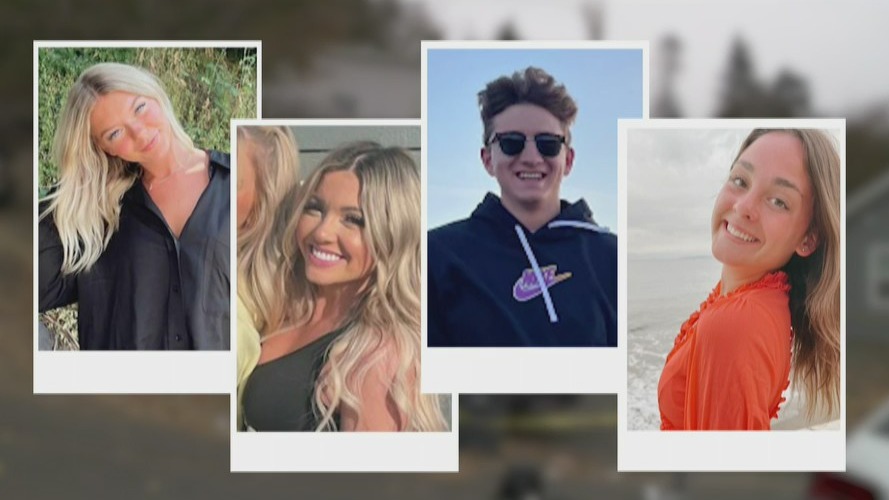Idaho investigation details loom large ahead of trial
Testing on staging11
(NewsNation) — The goal for law enforcement in Moscow, Idaho at this point is a simple one: investigation perfection and experts tell NewsNation that police, prosecutors and the courts will need to bring their A-game to the case of four slain University of Idaho students.
Kohberger — a 28-year-old criminal justice graduate student — faces first-degree murder charges, accused of killing college students Kaylee Goncalves, Madison Mogen, Xana Kernodle and Ethan Chapin on Nov. 13 near the University of Idaho.

The investigation, evidence processing, search warrants and Miranda Rights must be perfect, or the defense can pounce, according to Tama Kudman — a federal criminal defense attorney who has analyzed the case.
“The one thing that I’m not seeing in this arrest affidavit is a motive for this crime. Did Mr. Kohberger know these victims? And if not, you know, the defense is really going to be drilling in on that,” Kudman said.
Kudman looked over the gag order in place regarding this case. She says it’s an extensive one that’s necessary for both the defense and the prosecution. Kudman says the case must be protected from leaks if they want a fair trial.
“To the extent that any information is being leaked into the jury, they may be tainted,” Kudman said.
Both investigators and Kohberger’s defense team will likely now key in on even the smallest details from multiple areas of the case.
The Crime Scene
Retired FBI agent Kathy Guider isn’t surprised to see top-notch investigative techniques like 3D imaging used in the processing of the King Road homicide scene.
“Every location that comes up. Now you have more evidence teams out there, whether it’s digital evidence, communication, being part of that, whether it’s fingerprints, shoeprints, all the different technologies out there are very, very time consuming,” Guider said.
Moments in the investigation that might seem like missteps — such as the beginning of hazardous materials cleaning the King Road house that abruptly stopped — will likely get scrutiny for potentially damaging Kohberger’s due process.
“We call that spoilation of the evidence in criminal defense lingo and in the criminal world. That is going to most certainly be an issue,” Kudman said.
A new crime scene expert hired by the defense spent most of Tuesday in and out of the home, using 3D imaging technology also used by some detectives.
The expert specializes in crime scene reconstruction and blood pattern analysis. His career has been split over nearly equal time testifying for and against criminal suspects.
Along with the King Road home in Idaho, crime techs also spent more than 12 hours at suspect Bryan Kohberger’s Pullman, Washington, apartment, carting off a computer tower and more. Pullman is about 10 miles away from Moscow.
Guider said it seems to be a routine part of a well-executed law enforcement script.
“Every location that comes up, now you have more evidence teams out there. Whether it’s digital evidence, communication, being part of that, whether it’s fingerprints, shoeprints, all the different technologies out there are very, very time consuming,” Guider said.
The Hyundai Elantra
One of the first breaks in the case came when police started looking for a white Hyundai Elantra. Indiana State Police and the Hancock County Sheriff’s Office confirmed Kohberger was pulled over twice in a car matching the description within a nine-minute timespan on I-70 in December.
Jason LaBar, Kohberger’s attorney, told CNN his client was stopped once for speeding and a second time for closely following another car. He did not receive a ticket for either traffic stop.
The two Indiana traffic stops involving suspect Kohberger and his father are of little surprise to retired agent Guider.
“You’ve got the people that are going to look just at the linguistics of, ‘What did he say? Why did he say that, that particular time?’” Guider said.
Body camera footage shows the exchange between Kohberger and police. As a former member of an FBI mobile surveillance team, Guider noted the deputy’s talkative verification of who was behind the wheel. She also found the car and its potential contents during the traffic stop just as intriguing.
“Vehicle processing, I’ve done it numerous times, I mean, it’s very labor-time-consuming,” Guider said.
In her experience, Guider said she used small vacuum cleaners to gather evidence.
“Combing every part of that vehicle. Seats, under the seat, you know, the floor mats, if there are floor mats, every little piece is being evaluated for the potential evidence,” Guider said.
DNA Evidence
In the probable affidavit authorities filed ahead of Kohberger’s arrest, investigators found a “tan leather knife sheath” next to the bodies of Mogen and Goncalves. Investigators later tied DNA left on the button snap of the knife sheath to Kohberger.
Investigators say a key factor in the case was connecting that DNA sample from the crime scene to a different sample taken from the trash at the Kohberger’s Pennsylvania home.

The DNA collected in Pennsylvania belonged to Kohberger’s father, and authorities were able to use it to draw a familial link.
“I would caution everyone, most certainly we have enough information and evidence probable cause to arrest, but that does not mean that we have enough evidence for proof beyond reasonable doubt,” Kudman said.
Guider added: “Everything has to be meticulous from this point on.”